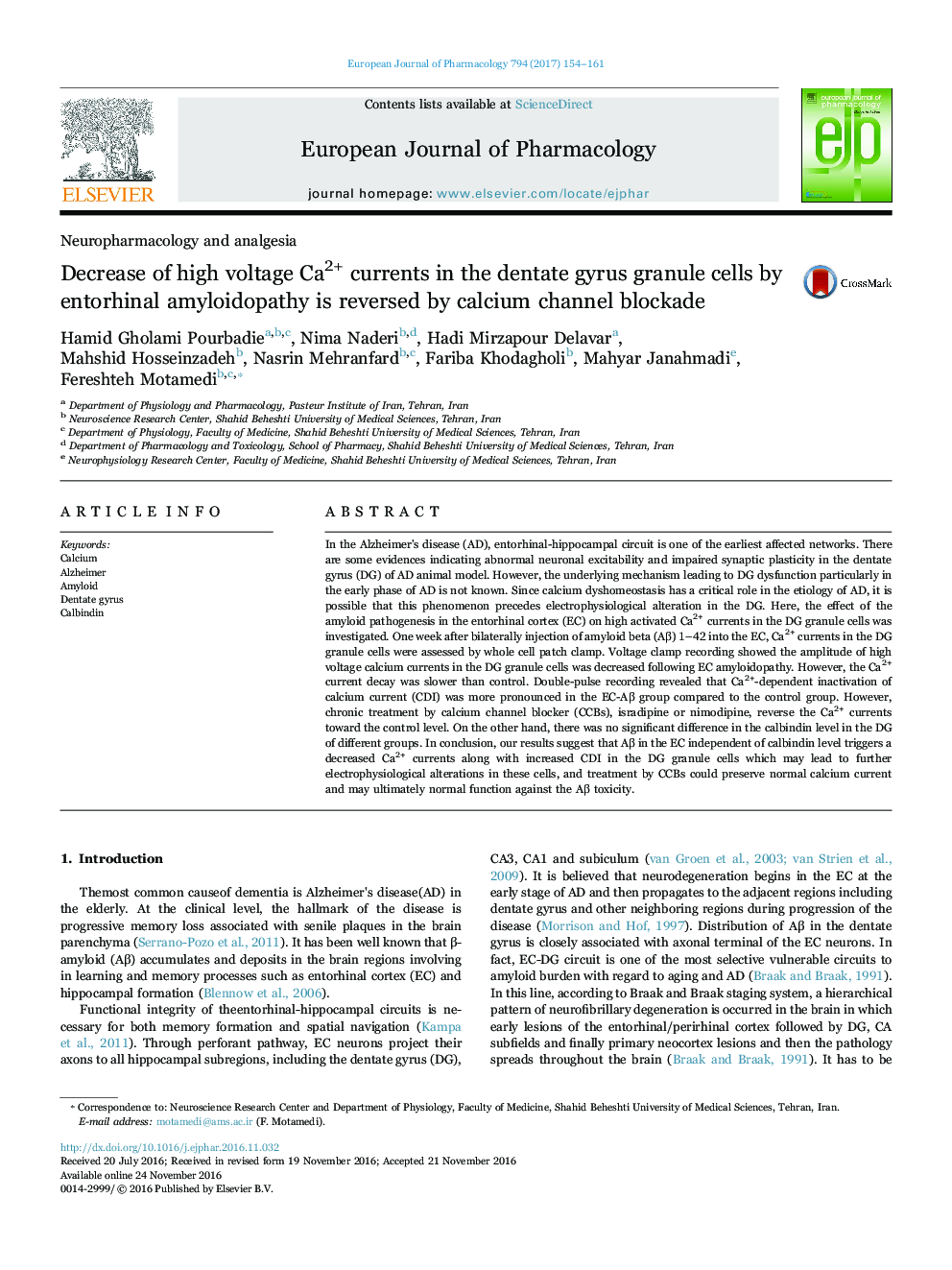| Article ID | Journal | Published Year | Pages | File Type |
|---|---|---|---|---|
| 5554898 | European Journal of Pharmacology | 2017 | 8 Pages |
In the Alzheimer's disease (AD), entorhinal-hippocampal circuit is one of the earliest affected networks. There are some evidences indicating abnormal neuronal excitability and impaired synaptic plasticity in the dentate gyrus (DG) of AD animal model. However, the underlying mechanism leading to DG dysfunction particularly in the early phase of AD is not known. Since calcium dyshomeostasis has a critical role in the etiology of AD, it is possible that this phenomenon precedes electrophysiological alteration in the DG. Here, the effect of the amyloid pathogenesis in the entorhinal cortex (EC) on high activated Ca2+ currents in the DG granule cells was investigated. One week after bilaterally injection of amyloid beta (Aβ) 1-42 into the EC, Ca2+ currents in the DG granule cells were assessed by whole cell patch clamp. Voltage clamp recording showed the amplitude of high voltage calcium currents in the DG granule cells was decreased following EC amyloidopathy. However, the Ca2+ current decay was slower than control. Double-pulse recording revealed that Ca2+-dependent inactivation of calcium current (CDI) was more pronounced in the EC-Aβ group compared to the control group. However, chronic treatment by calcium channel blocker (CCBs), isradipine or nimodipine, reverse the Ca2+ currents toward the control level. On the other hand, there was no significant difference in the calbindin level in the DG of different groups. In conclusion, our results suggest that Aβ in the EC independent of calbindin level triggers a decreased Ca2+ currents along with increased CDI in the DG granule cells which may lead to further electrophysiological alterations in these cells, and treatment by CCBs could preserve normal calcium current and may ultimately normal function against the Aβ toxicity.
Graphical abstractIn this study, the authors show that entorhinal (EC) amyloidopathy induces decreased high voltage calcium current along with increased calcium dependent inactivation (CDI) in the dentate gyrus granule cells. This abnormal calcium current may contribute in hypoexcitability of the dentate gyrus (DG) granule cells and finally behavioral deficit following entorhinal amyloidopathy. Chronic treatment by calcium channel blockers could almost restore calcium currents.Download high-res image (126KB)Download full-size image
